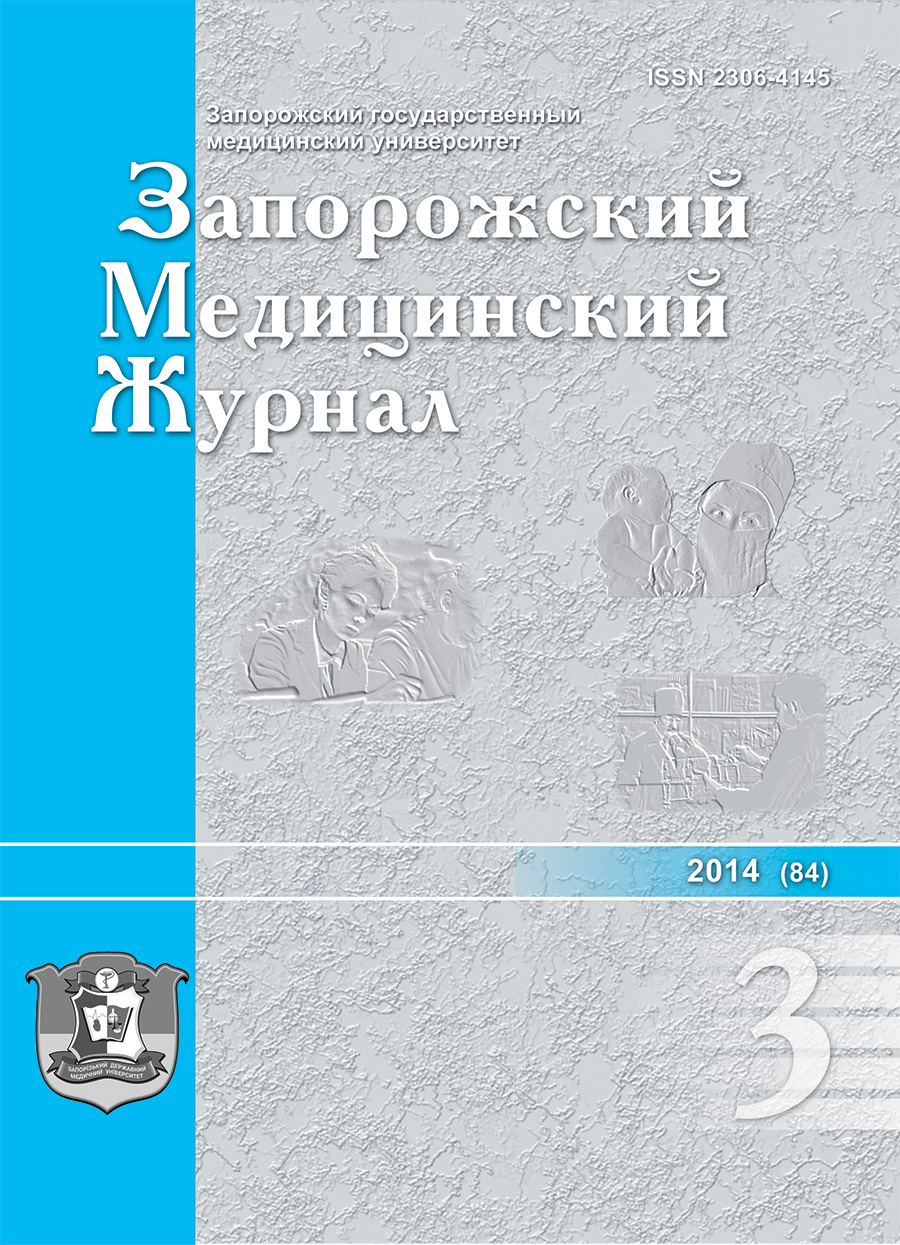Cytologic status changes of the conjunctiva and tears qualitative composition in patients with «dry eye» syndrome after instillation of modern topical fluoroquinolones
DOI:
https://doi.org/10.14739/2310-1210.2014.3.25989Keywords:
Fluoroquinolones, Conjunctiva, CrystallographyAbstract
Aim. Use of the antibiotics for eye was approved as a rational method for reducing the risk of postoperative endophthalmitis. The aim of our investigation was to study the influence of the modern topical fluoroquinolones on the qualitative composition of tears and cytological status of the conjunctiva in patients with cataract and «dry eye» syndrome.
Methods and results. 102 patients (109 eyes) aged 36–87 years was examined. Qualitative composition of tear fluid was studied with method of native tears crystallography and conjunctiva cytological study using impression cytoscopy method.
In 72.3% of cases the tears crystallography showed signs of pathology. Cytological examination of conjunctiva showed dystrophy in 86,8% of cases. In 11% of the patients typical cross-shaped crystals were detected.
Conclusion. Correlation dependence analysis showed statistically significant positive relationship (Spearman’s correlation r=0.53) between the presence of cross-shaped crystals in crystallography and severe dystrophy of conjunctiva epithelium. Instillation of modern topical fluoroquinolones worsen the cytological status of conjunctiva epithelium.
References
Zavgorodnyaya, N. G., & Isakova, O. A. (2005) Rannyaya diagnostika sindroma «sukhogo glaza» po ocenke kachestvennogo sostava slezy [Early diagnosis of the syndrome of "dry eye" to assess the qualitative composition of tears]. Oftal`mologicheskij zhurnal, 5, 18–20. [in Ukrainian].
Koledincev, M. N., & Majchuk, N. V. (2002) Sovremennye metody analiza sleznoj zhidkosti [Modern methods of analysis of tear fluid]. Novoe v oftalmologii, 4, 32–38. [in Russian].
Kudryashova Yu. I. (2006) Rol' immunooposredovannogo vospaleniya v razvitii sindroma «sukhogo glaza» [The role of immune-mediated inflammation in the development of the syndrome of «dry eye»]. Oftal`mologicheskij zhurnal, 4, 40–43. [in Ukrainian].
Brzheski, B. V., & Somov, E. E. (2003) Rogovichno-conyunctivalnij kseroz (diagnostica, clinica, lechenie) [Corneal-conjunctival xerosis (diagnosis, clinical, treatment)]. Saint-Petersburg. [in Russian].
Shilkin, G. A., Yarceva, N. S., & Medvedev, I. B. (1997) Rezul'taty kristallograficheskogo analiza sleznoj zhidkosti pri razlichnykh formakh distroficheskoj patologii glaza [Results of crystallographic analysis of tear fluid in various forms of dystrophic pathology]. Oftal'mokhirurgiya, 2, 86–92.
Malyugin, B. E`., Shpak, A. A., & Morozovа, T. А. (2011). Farmacevticheskoe soprovozhdenie sovremennoj khirurgii kataracty [Pharmacological support of modern cataract surgery]. Moscow: Oftal'mokogiya [in Russian].
Chang, D. F., Braga-Mele, R., Mamalis, N., et al. (2007) Prophilaxis of postoperative endophthalmitis after cataract surgery. Resalt of the 2007 ASRS member survey. J. Cataract. Refract. Surgery, 33, 1801–1805.
Donaldson, K. E. & Marangon, F. B. (2006) The effect of moxifloxacin onthe normal human cornea. Current Medical Research and Opinion, 10(22), 2073–2078.
Kim, S.-Y., & Lim, J.-A. (2007) Comparision of effect and corneal epithelial toxicity of levofloxacin and moxifloxacin in vitro. Cornea, 6(26), 720–725.
Watanabe, R., & Nakazawa, T. (2010) Fluoroquinolone antibacterial eye drops: effectson normal human corneal epithelium, stroma, and endothelium. Clinical Ophthalmology, 4, 1181–1187. doi: 10.2147/OPTH.S13672.
Downloads
How to Cite
Issue
Section
License
Authors who publish with this journal agree to the following terms:
Authors retain copyright and grant the journal right of first publication with the work simultaneously licensed under a Creative Commons Attribution License that allows others to share the work with an acknowledgement of the work's authorship and initial publication in this journal. 
Authors are able to enter into separate, additional contractual arrangements for the non-exclusive distribution of the journal's published version of the work (e.g., post it to an institutional repository or publish it in a book), with an acknowledgement of its initial publication in this journal.
Authors are permitted and encouraged to post their work online (e.g., in institutional repositories or on their website) prior to and during the submission process, as it can lead to productive exchanges, as well as earlier and greater citation of published work (See The Effect of Open Access)

